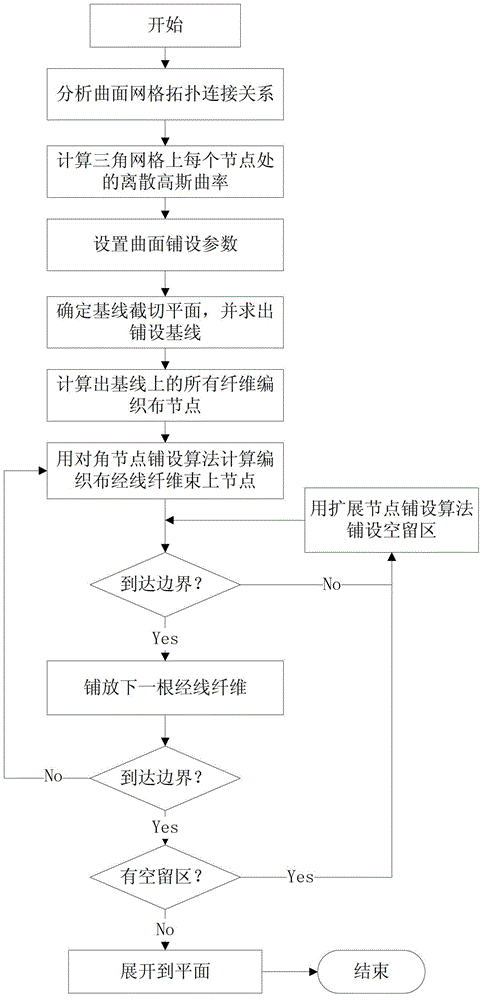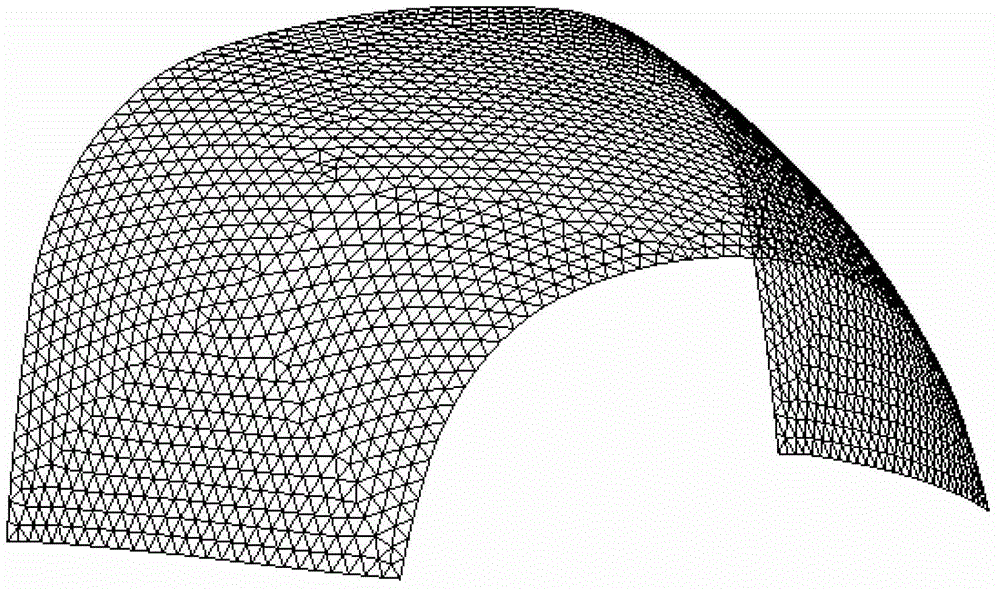Laying spreading method for composite material
A composite material and layering technology, applied in special data processing applications, instruments, electrical digital data processing, etc., can solve problems such as low efficiency, poor dimensional accuracy, and low material utilization.
- Summary
- Abstract
- Description
- Claims
- Application Information
AI Technical Summary
Problems solved by technology
Method used
Image
Examples
Embodiment Construction
[0033] Now in conjunction with embodiment, accompanying drawing, the present invention will be further described:
[0034] The surface to be unfolded is approximately represented by 3840 triangles connected by 2012 nodes (such as image 3 ), the composite material to be laid on the curved surface is a plain weave cloth, and the distance between any two warp fibers or weft fibers is 1mm. direction.
[0035] According to the present invention, its implementation process is as follows:
[0036] 1) Analyze the topological connection relationship of the triangular mesh, and the number of edges N can be obtained by Euler's theorem e =N p +N F -2=5850, such as Figure 4 , the triangle connection relationship of the mesh surface can be further analyzed to obtain the following topological connection relationship among nodes, edges and triangles:
[0037] a. Point P 0 The edge set Eset 0 {e 1 ,e 2 ,e 3 ,e 4 ,e 5 ,e 6}, ..., point P 2012 Edge set Eset 2011 {...};
[00...
PUM
 Login to View More
Login to View More Abstract
Description
Claims
Application Information
 Login to View More
Login to View More - R&D
- Intellectual Property
- Life Sciences
- Materials
- Tech Scout
- Unparalleled Data Quality
- Higher Quality Content
- 60% Fewer Hallucinations
Browse by: Latest US Patents, China's latest patents, Technical Efficacy Thesaurus, Application Domain, Technology Topic, Popular Technical Reports.
© 2025 PatSnap. All rights reserved.Legal|Privacy policy|Modern Slavery Act Transparency Statement|Sitemap|About US| Contact US: help@patsnap.com



